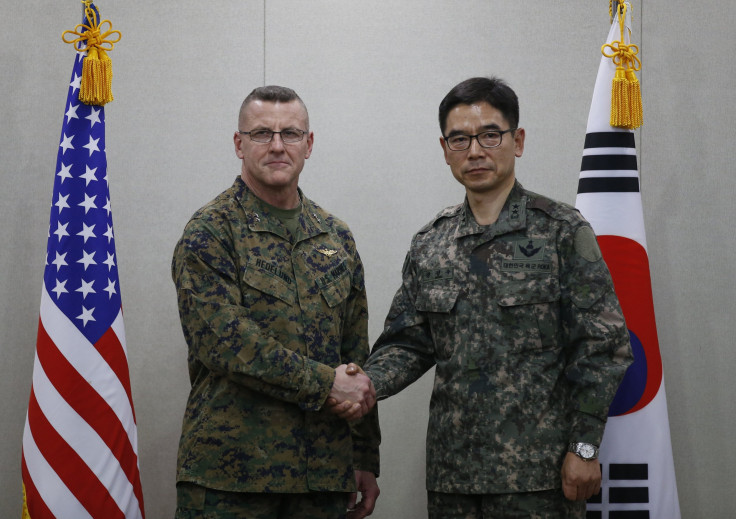THAAD In Korean Peninsula: South Korea, US Formally Launch Talks Over Potential Deployment Of Missile System

South Korea and the United States officially began talks Friday on the possible deployment of an anti-ballistic missile system to tackle the increasing threat from North Korea. The South Korean defense ministry said the discussion would revolve around possible locations and cost-sharing and a timeline for the Terminal High Altitude Area Defense (THAAD) system installation.
The two countries had indicated they would begin the talks after North Korea’s long-range rocket launch on Feb. 7, which world powers view as a disguise for developing an intercontinental ballistic missile (ICBM) equipped to mount a nuclear bomb. In January, Pyongyang had claimed it successfully tested a hydrogen bomb.
"North Korea has continued its nuclear tests and long-range missile provocations and defied South Korea and the international community's deterrence efforts. The THAAD system to be operated by USFK [United States Forces Korea] will contribute to the defense of South Korea from North Korea's increasing nuclear and missile threats," the South Korean defense ministry said, according to Yonhap News Agency.
China has consistently voiced strong opposition to THAAD saying the system could be used to monitor Chinese missile launches as far inland as Xian in the northwest. Seoul, being the main trade partner of the China — the world’s second-largest economy — has previously denied to formally discussing the installation of THAAD.
Meanwhile, affirming China’s concerns toward THAAD missile system, a Massachusetts Institute of Technology professor told Sputnik News that the deployment would in fact allow U.S. ballistic missile defenses to target China.
"THAAD will not be able to defend South Korea against North Korean ballistic missiles, but the THAAD radar could instead be used by the United States to specifically ‘aim’ the U.S. national missile defense at China — in outright contradiction of U.S. stated policies," Theodore Postol, a former U.S. Chief of Naval Operations science and policy advisor, told the Russian news agency.
"If the U.S. deploys the radar for THAAD on the Korean Peninsula, it would be able to detect and track intercontinental ballistic missiles being launched from China toward the continental US at ranges of up to 3,000 km (1,800 miles) as they pass over or north of South Korea," Postol reportedly said.
© Copyright IBTimes 2025. All rights reserved.






















